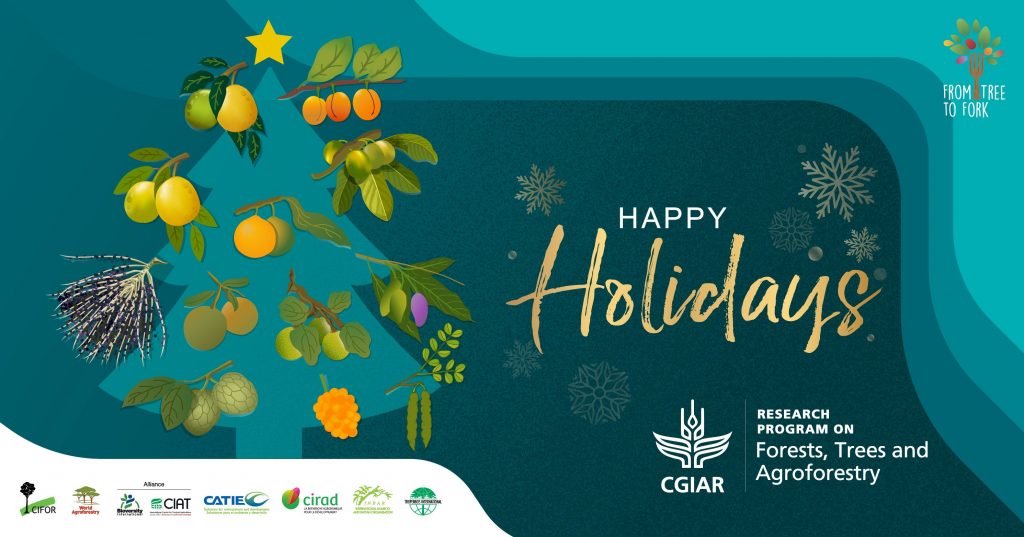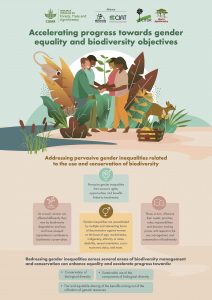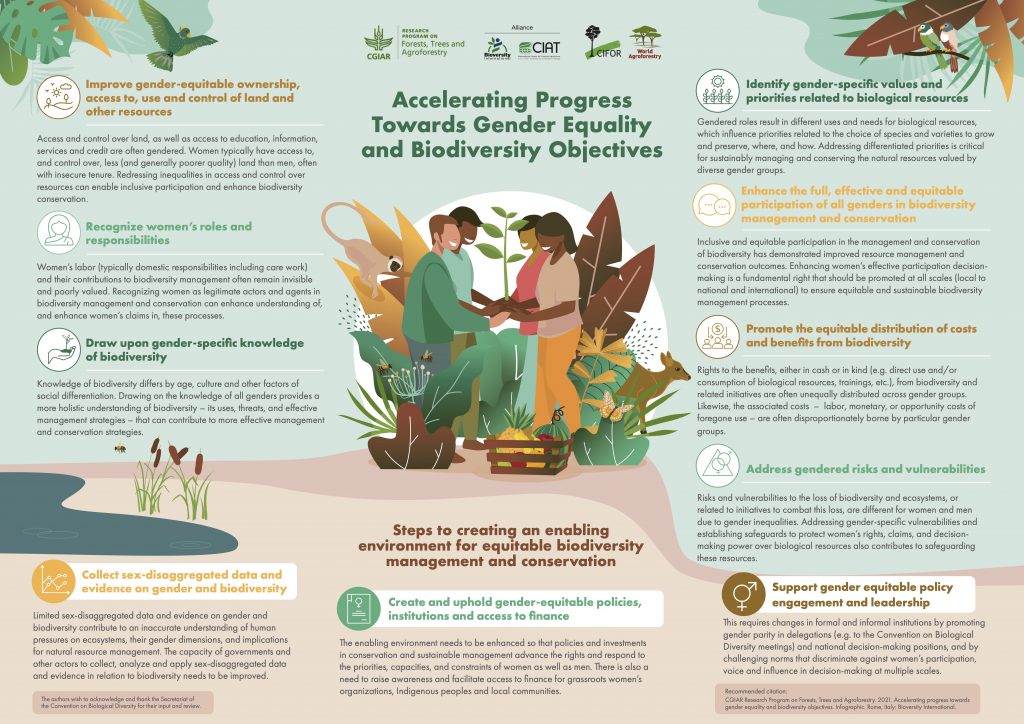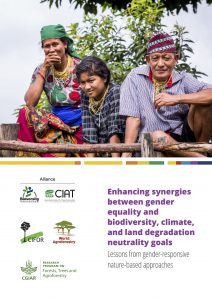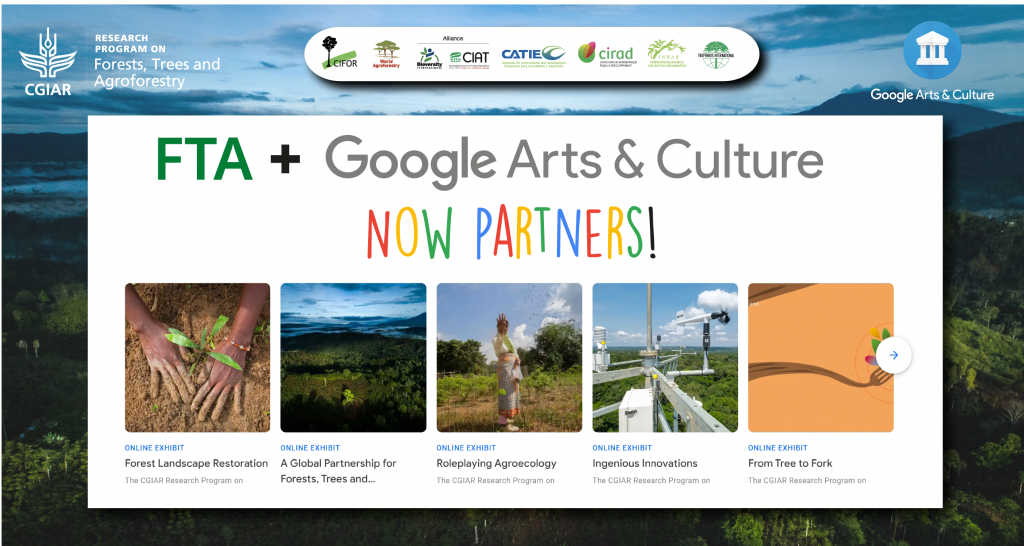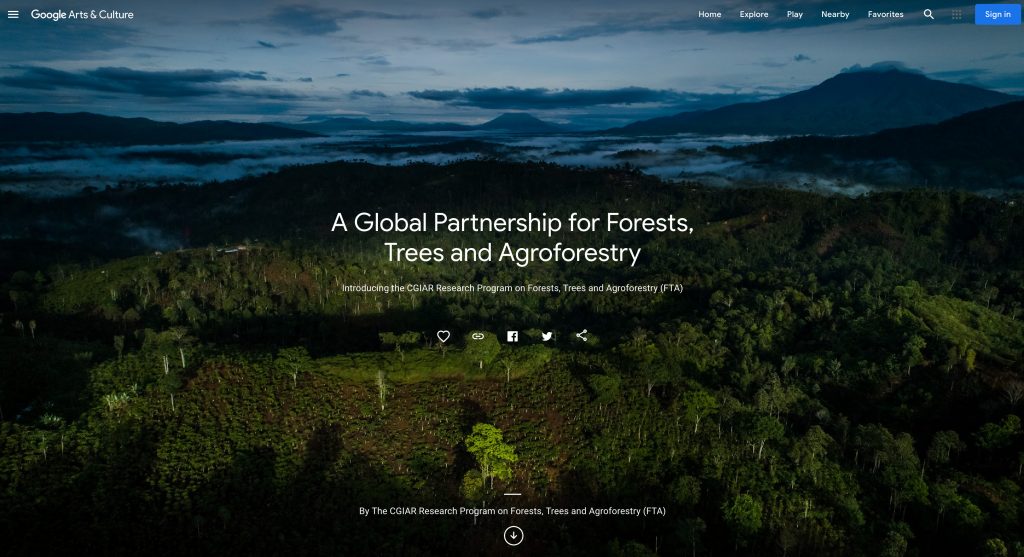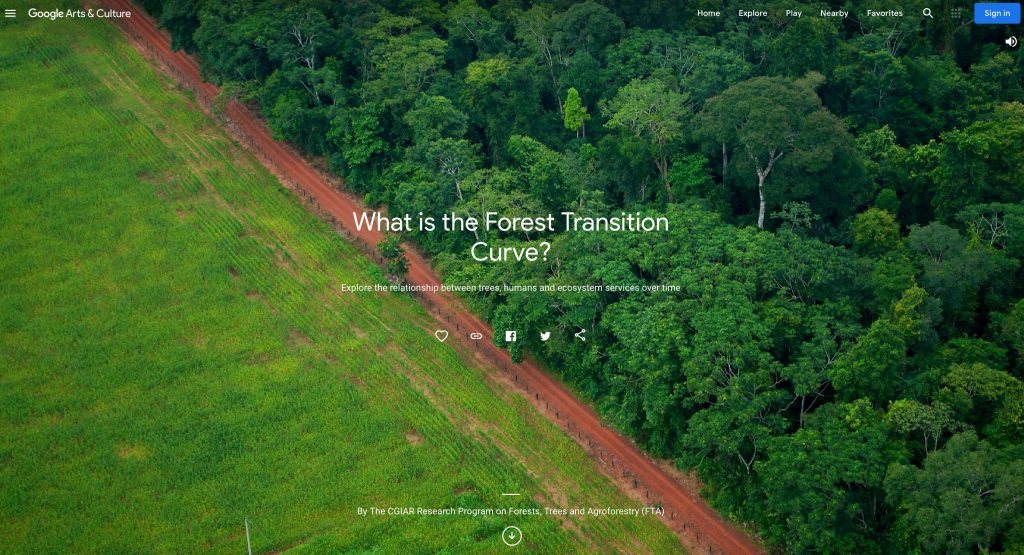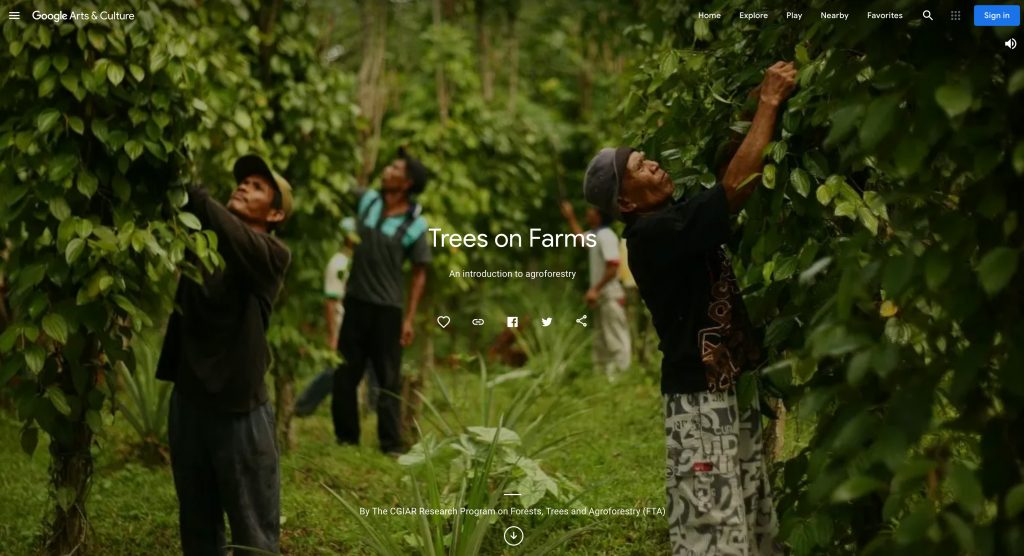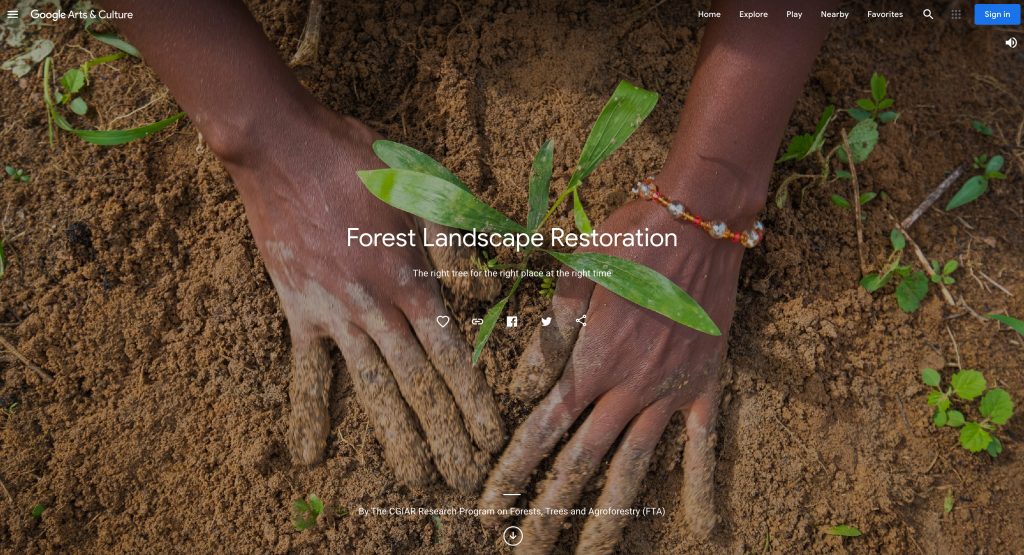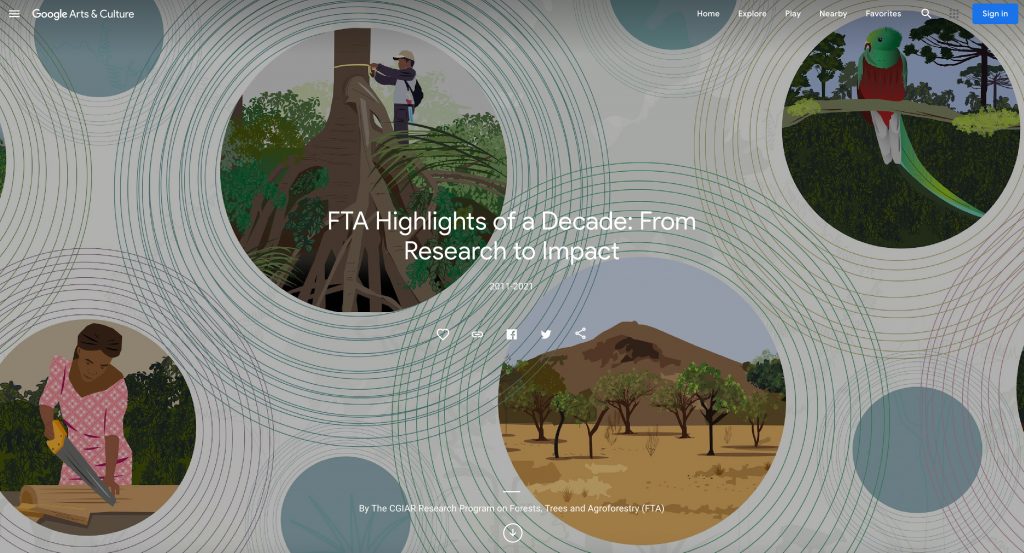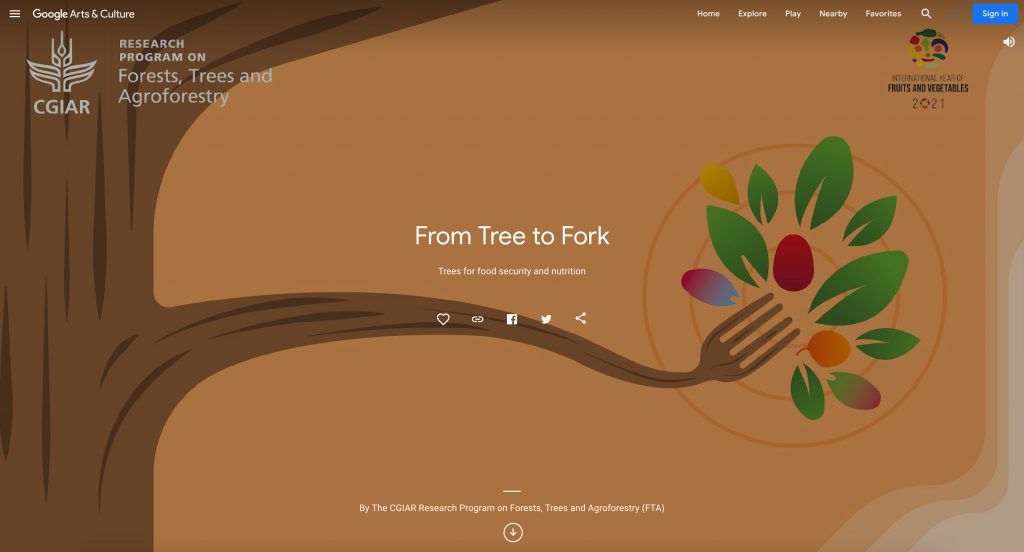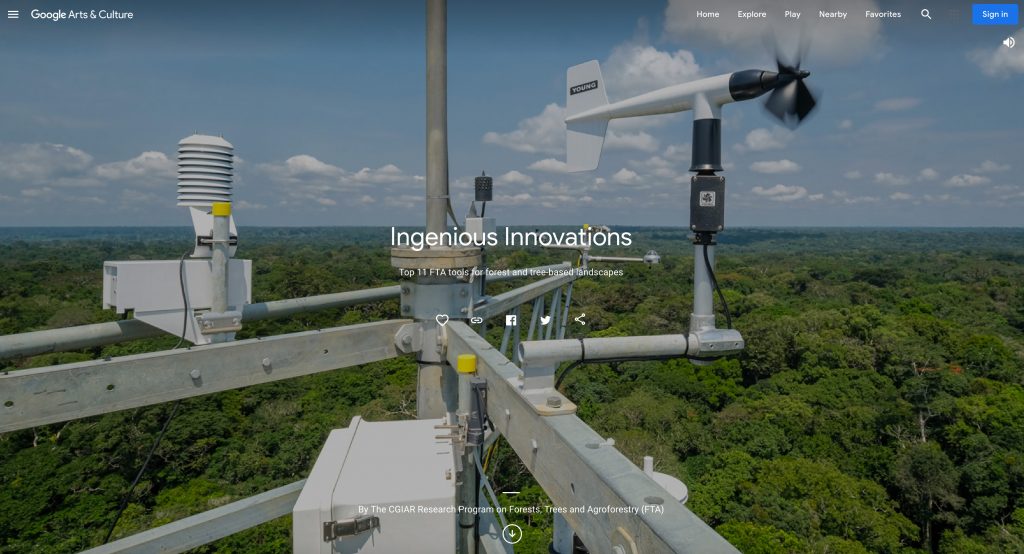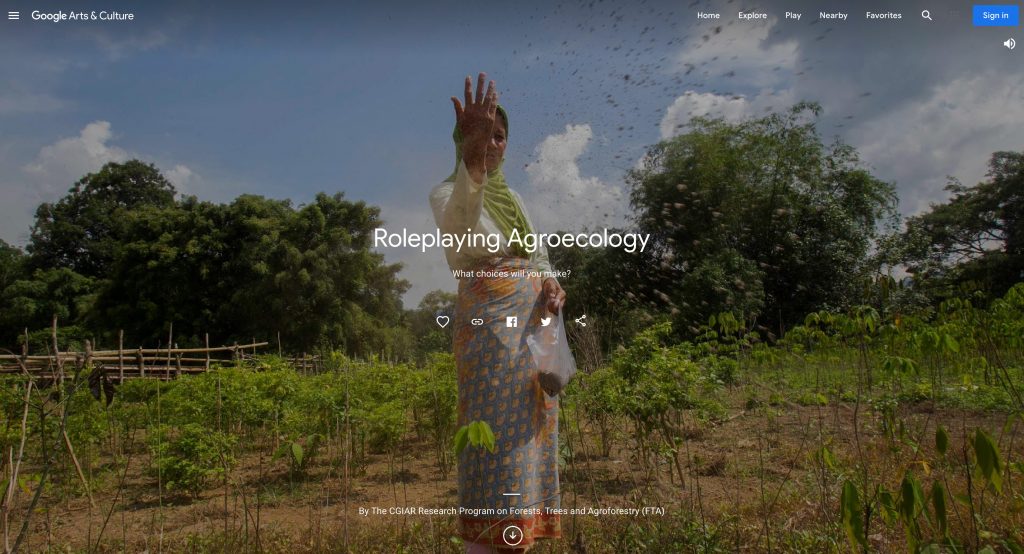The “final” FTA event on Dec. 9 culminated 10 impactful years of research for development; it brought together 338 attendees from over 50 countries to hear about the partnership’s top accomplishments and lessons learned. These successes light the collective path forward into a new decade of continued research and impact.
“This is a springboard,” said Center for International Forestry Research and World Agroforestry (CIFOR-ICRAF) Director General, and Director of the first phase of FTA, Robert Nasi. “…We don’t want to stop here, as there is much more work to do in light of the recent COP26, the CBD and the news you see every day. We have a good team; we have a good set of partners. I see no reason why we should stop here.”
To begin the event, lead scientists from FTA’s Flagship programs and managing-partner organizations presented chapters from the FTA Highlights series, which showcases a decade of results, findings and achievements. More than 200 scientists were involved as authors in the highlights series’ 18 volumes. The event was organized around four sections which represent a partition of the highlights volumes.
The full event can be replayed in EN (ES and FR to follow). Download the agenda of the event.
Session #1: Forests, Trees and Agroforestry for Biodiversity and Food Systems
The first session was moderated by Linda Collette, member of the Independent Steering Committee of FTA, and showcased volumes two through six of the highlights series. Each of these chapters emphasize research and impactful projects related to tree genetic resources, biodiversity, landscape restoration, food systems and wildlife.
Leading the way, Ramni Jamnadass, FTA’s Flagship 1 Leader and senior scientist at ICRAF, presented on seeds and seedlings (Vol.2). She highlighted the need for diverse, high-quality seeds to sprout successful landscape restoration initiatives that are good for business and for ecosystems. “We have seen soaring tree-planting pledges over the past few years,” she said, “so this is an opportune time to bring up the seeds and to ask where they are coming from. …remember: garbage in, garbage out. Quality in, quality out.”
Read volume 2
Senior researcher at the Alliance of Bioversity International and CIAT, Barbara Vinceti, similarly reflected the need for diversity in her presentation on conservation of tree biodiversity and forest management (Vol. 3). In light of the ongoing environmental challenges facing the planet, “genetic diversity is a dimension still overlooked, so we need to include it explicitly in forest conservation and management,” she said.
Read volume 3
However, restoring ecosystem services is a difficult topic from a development perspective because it is multi-dimensional and multi-scalar, according to senior CIFOR scientist, Manuel Guariguata. Presenting on forest and landscape restoration (Vol. 4), he summarized FTA’s contributions to research and policy governance. He also celebrated the partnership’s on-the-ground implementation of FLR initiatives, “The restoration agenda is the bread and butter of FTA partners, and we have contributed a lot in this regard” he said. “We also learned a lot. For instance, we learned it is critical to implement FLR through landscape approaches.”
Read volume 4
Next, senior CIFOR scientist Amy Ickowitz showcased tree and agroforestry contributions to food security and nutrition. Ten years of research across Africa, Asia and South America has increasingly proved the links between trees and micro-nutrient-rich diets. “A lot more still needs to be done to have these contributions [from food trees] both better understood and, more importantly, better integrated in national discourses and policy,” said Ickowitz.
Read volume 5
Wild meat is another important, albeit controversial, source of nutrition that comes from forests. World expert and CIFOR senior associate, Julia Fa, has worked with the Bushmeat Research Initiative (BRI) to study how wild meat consumption impacts the environment, contributes to food security and impacts human health through its association with zoonotic diseases. She and her team have worked in more than 40 countries including the Democratic Republic of the Congo (DRC) and Indonesia. “We’re very proud of what we’ve done in the last 10 years, and based on this, there is now an agenda to translate research to action, to link implementation and further learning and to ensure that wild meat is sustainably sourced and harvested,” said Fa.
Read volume 6
Session #2 – Forests, Trees and Agroforestry for Livelihoods
The second session was moderated by René Boot, member of the FTA ISC and Director of Tropenbos International; it centred on the highlights’ volumes seven through nine plus 15. These chapters reveal how FTA and its partners have worked to improve well-being and generate income through trees for people in developing areas.
For example, FTA Management Team member and CATIE senior scientist, Eduardo Somarriba, discussed how Trees on Farms (ToF), can generate income for farmers while also providing valuable ecosystem services. He especially focused on a case from Honduras where trees have been planted as “live fences” to facilitate rotational livestock grazing. “It is possible to increase innovation with trees on farms, but we need solid science to convince farmers, land-use planners and policymakers,” he said. “You need a lot of communication, facilitation and to show good financial performance.”
Read volume 7 (COMING SOON)
Sustainable timber harvesting for bioenergy is another way that trees can act as engines for sustainable development. INBAR representative, Li Yanxia, discussed how a wood-based circular bioeconomy could benefit local communities and global economies while reducing the ecological footprint of deforestation. “Efforts should not only invest in building natural capital,” she said. “Attention should also be directed towards building human capacity and understanding the social dimensions of the wood value chains through forest tenure systems, etc.”
Read volume 8 (COMING SOON)
Transitioning to a circular bioeconomy will require context-specific approaches that work at scale. In his presentation, CIFOR-ICRAF chief scientist and FTA Flagship 2 Leader Fergus Sinclair specifically promoted FTA’s work on Options by Context (OxC), a set of performance metrics that allow farmers and researchers to identify the best options for agricultural development and land restoration in their local areas. He also spotlighted the recent launch of the Agroecology Transformative Partnership Platform (TPP) that FTA incubated, and which brings together people from around the world to discuss sustainable food systems transitions. “There are multiple transition pathways depending on local contexts and partnerships; this is what allows us to scale up sustainably.”
Read volume 9 (COMING SOON)
None of this work is possible without financial support and increased investment in sustainable forest and tree-based commodities. Presenting the FTA Highlight Volume 10 on sustainable value chains, finance and investment in forestry & tree commodities, Michael Brady, FTA’s Flagship 3 Leader, outlined three core research areas for sustainable value chains: institutional arrangements, business models for smallholders and SMEs and responsible finance among financial service providers. He noted that research this decade has especially focused on sustainable certification systems for agro-commodities such as timber, rubber, shea, oil palm and cocoa. “This particular topic very much requires a systems approach looking at institutional, environmental and socioeconomic elements,” he said. “None of these can be really ignored when you consider value chains, finance and investment.”
Read volume 10
Cross-cutting all of FTA’s work on livelihoods is the need to advance gender equality and social inclusion. FTA’s Gender coordinator and senior researcher at The Alliance of Bioversity and CIAT, Marlène Elias outlined FTA’s Theory of Change, which places inclusion at the heart of the organization’s structure and encourages research done specifically with a gender and social inclusion lens. The goal is for women and other marginalized groups to share equal rights, access and tenure to forest and tree-based landscapes. “What we’ve shown in this work is not only that gender inequality can hinder efforts to achieve positive environmental outcomes but also how policies and interventions that focus on the environment can advance gender equality,” she said.
Read volume 15
Session #3 – Forests, Trees and Agroforestry for Climate change and the SDGs
The third session of the event focused on how FTA’s research aligns with the SDGs and contributes to climate change adaptation and mitigation. Moderated by Florencia Montagnini, member of FTA’s ISC, the presenters spoke on volumes 11-14 of the highlights series.
Starting off, Christopher Martius, CIFOR senior scientist and Flagship 5 Leader, offered several examples from FTA’s Global Comparative Study on REDD+. This work has helped governments set target emissions levels and to implement monitoring systems to track progress. While celebrating the work that was achieved over the past 10 years, Martius reminded the audience that long-term changes take time: “Oftentimes projects have a lot of high expectations,” he said. “In a 10-year program such as this, you will start seeing results, but it takes a lot of time to effectuate these changes in really complex policy environments.”
Read volume 11
It is well-known that forests and trees act as carbon sinks and ecosystem service providers. The mitigation agenda has often hidden a crucial adaptation agenda for forests and trees. FTA has worked to shift paradigms towards the key role of forests and trees for adaptation of various sectors. FTA’s approach also looks at how social and ecological systems can work together and adapt to climate change, according to senior CIFOR scientist Alexandre Meybeck. “You need to have research embedded in implementation,” he said. “We need normal interactions between actors on the ground and scientists to support them in creating the new systems for the future.”
Read volume 12 (COMING SOON)
In order to facilitate mutually-beneficial relationships between humans and ecosystems, FTA promotes a multifunctional landscapes approach that uses careful resource planning and implementation to generate more sustainable futures. Scientist at ICRAF, Lalisa Duguma, presented on how the organization has begun implementing these approaches in the humid tropics, managing trade-offs and synergies across multiple project sites. “We can’t solve all the problems at once, but they all need to be confronted in a way” he said. “There is a need for multiple projects to complement one another to achieve multi-functional landscapes. …for this, we need an articulated portfolio of research and action on the ground.”
Read volume 13 (COMING SOON)
Beyond on-the-ground approaches, FTA works with governments to build policies that harmonize human development with nature. Senior ICRAF scientist Beria Leimona spoke about how this work has involved advocating for multi-stakeholder forums (MSFs), supporting community forestry initiatives and lobbying for fair government policies. “The rich portfolios of local, national and international work, and the theories of change that FTA has developed, can support good governance principles being synergised across scales,” she said.
Session #4 – Results and impact
During the fourth session of presentations, led by Management Team member and CIRAD senior scientist Plinio Sist, scientists gave more details about how FTA measures its results and impact across scales.
Andrew Wardell began with a presentation on how FTA facilitates long-term capacity development. For example, his team collated data from the decade to track impacts and found there have been almost 80,000 downloads of the climate change tools that have been developed by FTA Flagship 5. Another example of capacity development includes the work done with the University of Kisangani, DRC, to train graduate students in forestry science and development. Already, the program has over 200 local students and graduates who will hopefully continue to work in the tropical rainforests of DRC. In the future, Wardell believes “there is a need to strengthen education systems and capacities in the global south, rather than relying on masters and PhD students from the global north. …This needs to be accompanied by monitoring and evaluation systems that look at the capacity development functions, including through ex post impact studies.”
Read volume 16 (COMING SOON)
In addition to capacity development, research for impact requires monitoring, evaluation, learning and impact assessment (MELIA). “Evolving research for development approaches require evolution in how we conceptualize and assess research,” said Brian Belcher, senior researcher at Royal Roads University. “How do we know that we’re doing the right thing? How do we know that we’re being effective?” To answer these questions, FTA has developed and applied an innovative approach based on integrative, challenge-driven Theories of Change and an organizing framework. These tools allow FTA to conduct qualitative assessments of some of the impacts of the program at scale and on key development objectives. Impact of FTA research overall has been substantial, it is estimated that FTA’s work has:
- Brought between 1.8–34.4 million ha of land under
- Provided between 5.1–19 million people with better means to exit poverty.
- Brought 25.7–133.4 million ha of forests under enhanced protection. This represents up to 125.4 Gt of sequestered carbon dioxide.
- Brought 59.5–204 million ha of land under better management via improved policy, monitoring and management practices.
- Provided 1.12–3.43 million people with additional means to improve food and nutritional security.
Read volume 17
Following each set of presentations, the audience was asked through a poll whether they thought more implementation or more research was needed going forward. Although there was some debate, it is interesting that most poll respondents chose “more implementation.” The scientists agreed that implementation is now urgent, however, the relationship between research and implementation cannot be easily divided. “Do we need more research or implementation?,” said Meybeck. “We need a greater understanding of the relations between the two. We need more implementation of research and more research on implementation.”
Final discussion on the future of FTA
The closing panel brought together five distinguished speakers to discuss partnerships and new directions going forward. When moderator and FTA Director, Vincent Gitz, asked how organizations like FTA should work with actors in the global south going forward, Chairperson of the Independent Steering Committee of FTA, Anne-Marie Izac said, “Great focus on the role of partnerships is the very raison-d’être of FTA. …We have a relatively clear path ahead of us in terms of scaling up to build on local partneships… and I’m extremely hopeful.”
Sist (CIRAD) agreed that after 10 years and looking forward to a new FTA, we should put emphasis on strengthening our connection with society and with other actors in the field: “Our resources must breach the broader society if we want to catalyse large-scale changes that address climate change and other global challenges” he said.
Bas Louman from Tropenbos International, an organization that joined the set of FTA managing partners in 2017, also spoke on the value of an integrated, research-for-development approach for the new FTA, from upstream research to downstream, and back. “In spite of so much money being dedicated to climate, very little of that money is dedicated to research,” he said. “People just spend money and start implementing without really taking the time to think about what they’re doing. We need to help the word correct for that, to continue learning at the same time action is being made on the ground.”
To combat this trend, Li Xuejiao Deputy Director of the Division of International Cooperation at the Chinese Academy of Forestry (CAF) upheld the importance of ongoing South-South collaboration in the coming decade. “Research plays a very important role in terms of putting items on the agenda in the first place,” she said. Li pointed to ongoing networking opportunities for Chinese organizations through the FTA network.
Similarly, Erich Schaitza, Director General of Brazil’s Embrapa Florestas, praised the networking potential of FTA: “We have to have innovation to promote wealth sustainably,” he said. “Initiatives like FTA are incredibly important to us.”
In closing, Vincent Gitz, Director of FTA, called on the audience to remain hopeful about future progress and to work together to achieve goals. He said, “Often it is difficult to see the magnitude, increment and annual changes in the work we live in. But when we look back 10 years, we see the huge magnitude on how some things have changed and evolved, on the progress made for our planetary environment and people. Not all is solved of course, but it gives us hope that we can be effective for the future… And as the famous proverb says, ‘if we want to go far, we have to go together.’”
Stay tuned for the next decade of FTA, and a special thanks to all the scientists and partners who have made these past 10 years possible.
All the speakers’ PowerPoint presentations are now available below
This article was written by Daniella Silva.
This article was produced by the CGIAR Research Program on Forests, Trees and Agroforestry (FTA). FTA is the world’s largest research for development program to enhance the role of forests, trees and agroforestry in sustainable development and food security and to address climate change. CIFOR leads FTA in partnership with ICRAF, the Alliance of Bioversity International and CIAT, CATIE, CIRAD, INBAR and TBI. FTA’s work is supported by the CGIAR Trust Fund.












